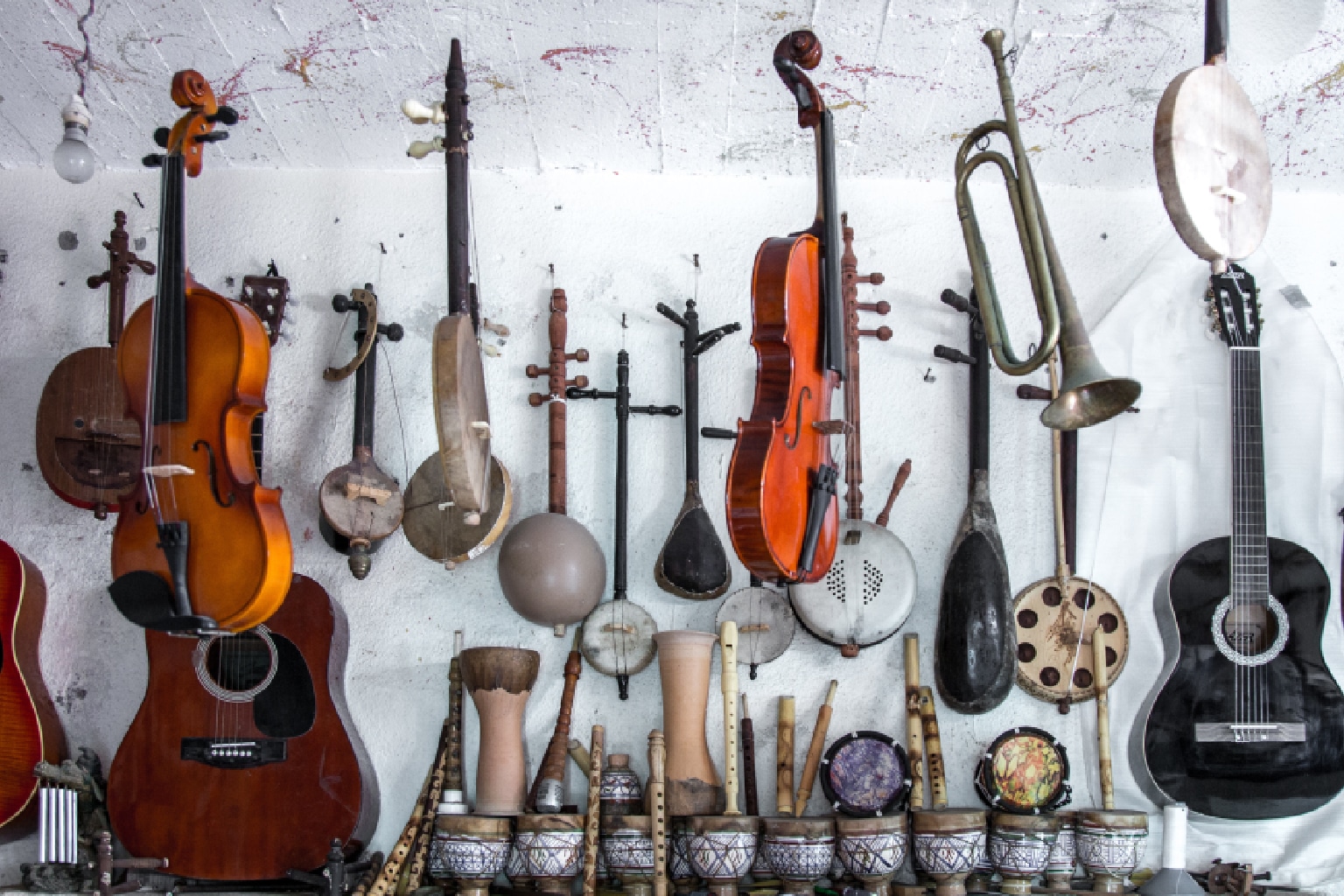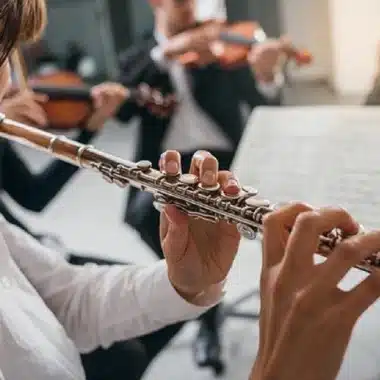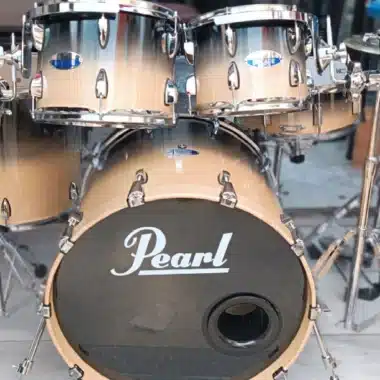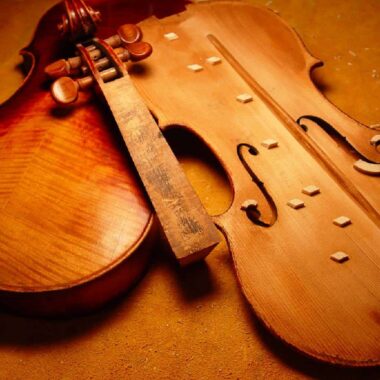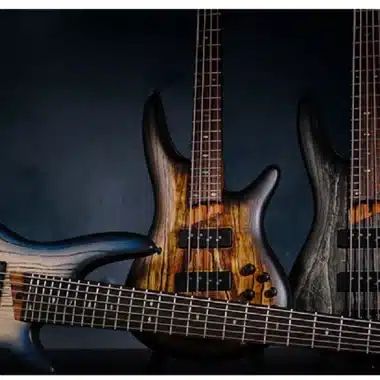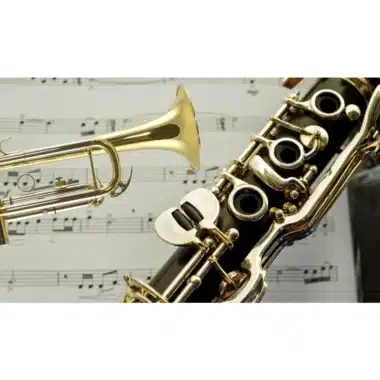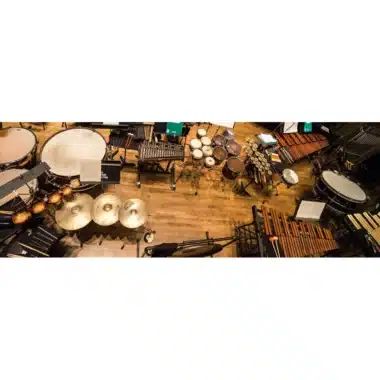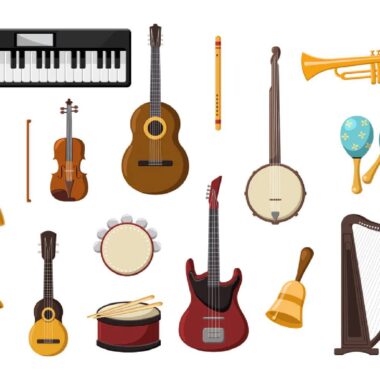Exploring the World of String Instruments: From Ancient Traditions to Modern Sounds
String instruments hold a unique place in music history, spanning cultures and centuries with their diverse sounds, styles, and structures. From delicate plucking and bowing techniques to powerful strumming, these instruments embody the intersection of melody, rhythm, and harmony in a way that few others do. This blog will explore the fascinating history, types, cultural significance, and modern use of string instruments around the world, providing an in-depth look at these versatile instruments.

1. Introduction: The Timeless Allure of String Instruments
String instruments have captivated audiences since ancient times. Defined by their method of sound production—using stretched strings that vibrate when plucked, bowed, or struck—string instruments have been central to music in nearly every culture. The diversity in design, technique, and musical style means there’s a string instrument suited for every genre, from classical and folk to rock and jazz.
Historically, string instruments were constructed from natural materials and developed unique forms suited to each region’s musical traditions and requirements. Today, technological innovations have expanded the types of string instruments available, influencing music production worldwide. As string instruments continue to evolve, their enchanting sound endures, speaking to the human soul in a profound and timeless way.
2. A Brief History of String Instruments
String instruments have a deep, fascinating history that reflects humanity’s creativity and cultural evolution. From ancient civilizations to today’s modern orchestras, these instruments have held a significant role in expressing emotions, telling stories, and bringing people together through music.
The journey of string instruments begins with ancient civilizations, where rudimentary forms of these instruments were crafted from natural materials like wood, animal gut, and bone. Early string instruments were often used in religious ceremonies, gatherings, and storytelling. In Mesopotamia and Egypt, archaeologists discovered harps and lyres dating back thousands of years, revealing that strings have been used to create music since at least 3000 BCE. In China, the guqin, an ancient seven-string instrument, has been played for over 3,000 years and is revered for its association with intellectuals, poets, and philosophers.
As music evolved in different cultures, so did the design and diversity of string instruments. In Europe, the lute became one of the most popular instruments during the Middle Ages and Renaissance. The lute’s unique design and portable size made it perfect for court performances and folk music, and it laid the foundation for modern guitars. Similarly, in the Indian subcontinent, the sitar and veena became central to classical music, shaping the rich tradition of Indian musical expression. These instruments were crafted meticulously, often incorporating intricate carvings and embellishments, and were used to accompany vocal performances and dances.
The Renaissance and Baroque periods in Europe witnessed significant advancements in string instrument construction and technique. Luthiers, or instrument makers, refined the shapes and acoustic properties of violins, violas, cellos, and double basses, setting the standard for the modern orchestra. The Italian luthiers, including Antonio Stradivari and Andrea Amati, were renowned for creating violins that produced a warm, resonant tone, qualities that made these instruments highly sought after for centuries. This period marked the golden age of string instruments in classical music, with orchestras and chamber ensembles relying on strings to convey both delicate and powerful musical passages.
Outside of Europe, string instruments continued to evolve uniquely in other regions. In Japan, the shamisen became an integral part of Japanese folk and theatrical music. In West Africa, the kora—a 21-string harp-lute played by griots—held a prominent role in storytelling and cultural preservation. The variety of string instruments across continents demonstrates the universal appeal and adaptability of strings to local musical tastes and storytelling traditions.
With the industrial revolution in the 19th century, mass production methods allowed string instruments to reach a wider audience, making them more accessible to people from all walks of life. The guitar, in particular, rose in popularity, especially in the Americas, where it became essential to genres like blues, folk, and eventually rock.
Today, string instruments are as diverse as ever, encompassing both traditional acoustic forms and modern electric versions. Their history showcases a legacy of adaptation, artistry, and emotional expression, making them timeless tools for musical storytelling. From ancient harps and lyres to contemporary electric guitars and violins, the evolution of string instruments highlights their remarkable resilience and enduring appeal across cultures and generations.
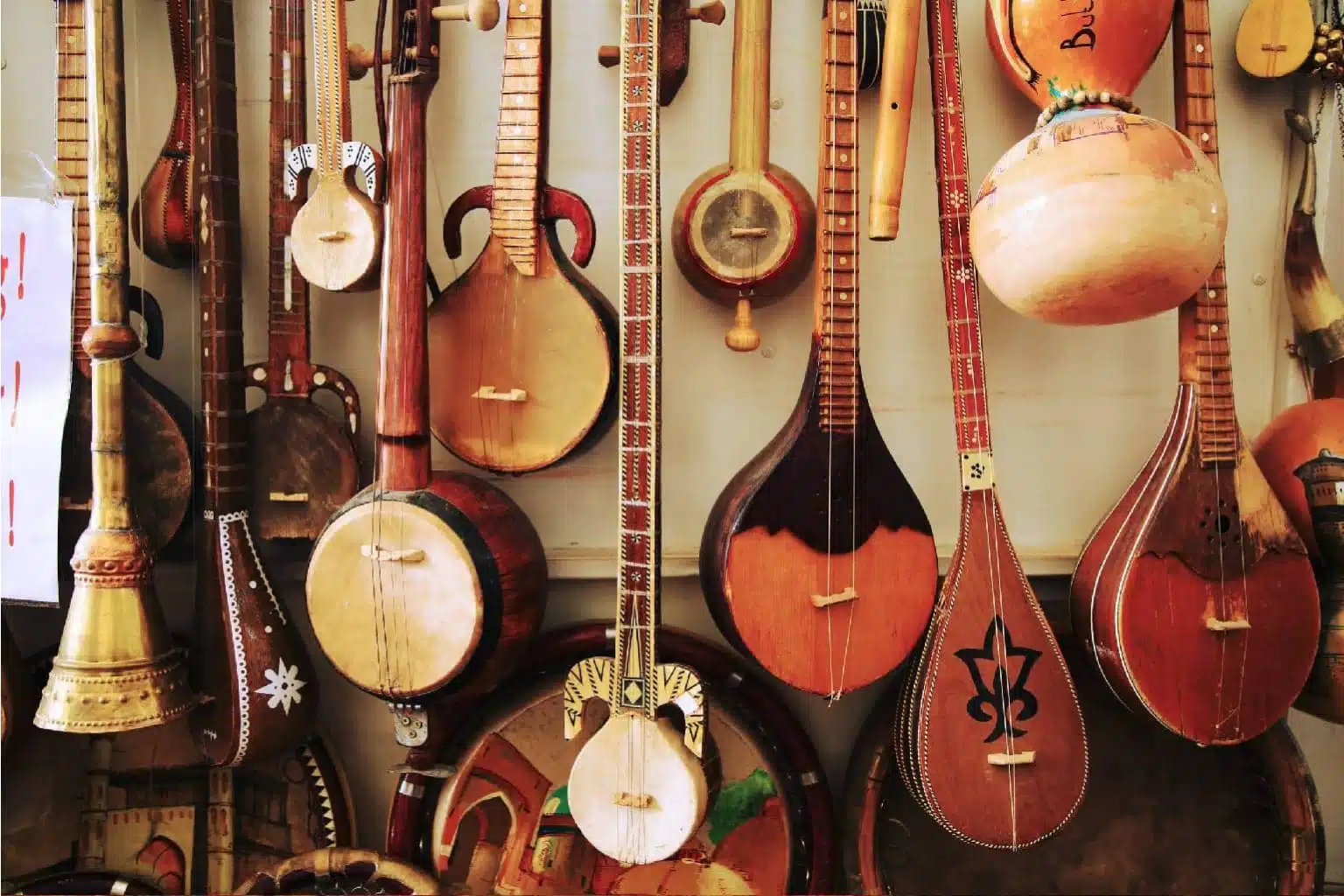
3. Key Types of String Instruments
String instruments are incredibly diverse, with variations across cultures, music styles, and purposes. Generally, they are categorized based on how they produce sound: by bowing, plucking, or striking. Here’s an overview of some key types of string instruments that showcase this versatility and rich history.
Bowed String Instruments
Bowed string instruments produce sound by drawing a bow across their strings, creating continuous, expressive tones. The violin is perhaps the most well-known of these instruments, with its bright, soaring voice central to Western classical music, as well as folk and even pop genres.
Slightly larger than the violin, the viola has a mellower, warmer tone that adds harmony in orchestras and ensembles. The cello, with its deep and resonant sound, is valued for its ability to span both high and low notes, giving it a wide expressive range. The double bass, the largest of this group, provides a foundation of rhythm and depth, especially in classical, jazz, and blues settings. These instruments together form the backbone of orchestras and chamber music, offering depth, harmony, and melody.
Plucked String Instruments
Plucked instruments, as their name suggests, create sound by plucking or strumming their strings. The guitar is widely popular across genres, from classical and folk to rock and jazz, due to its versatility and accessibility. Another iconic plucked instrument is the harp, which has existed in various forms for thousands of years and is often associated with classical and Celtic music.
The banjo, with its bright, percussive tone, is an essential part of American folk and bluegrass music. The mandolin, known for its distinct tremolo playing style, brings a unique sound to genres like bluegrass, classical, and folk. Each of these instruments brings something distinct to music, making plucked strings one of the most varied categories.
Struck String Instruments
Struck string instruments produce sound when their strings are hit, rather than bowed or plucked. The piano is one of the most famous examples, blending characteristics of string and percussion instruments. Its broad dynamic range and versatility have made it essential in nearly every genre, from classical to jazz and pop. The dulcimer, another struck instrument, creates a gentle, melodic sound and is common in folk music traditions across Europe and America.
From the lyrical sounds of the bowed instruments to the vibrant tones of plucked strings and the resonance of struck instruments, each type of string instrument brings its unique character to music. Their rich variety and adaptability make string instruments foundational to the world’s musical traditions, evolving with new forms and technologies while preserving their timeless appeal.
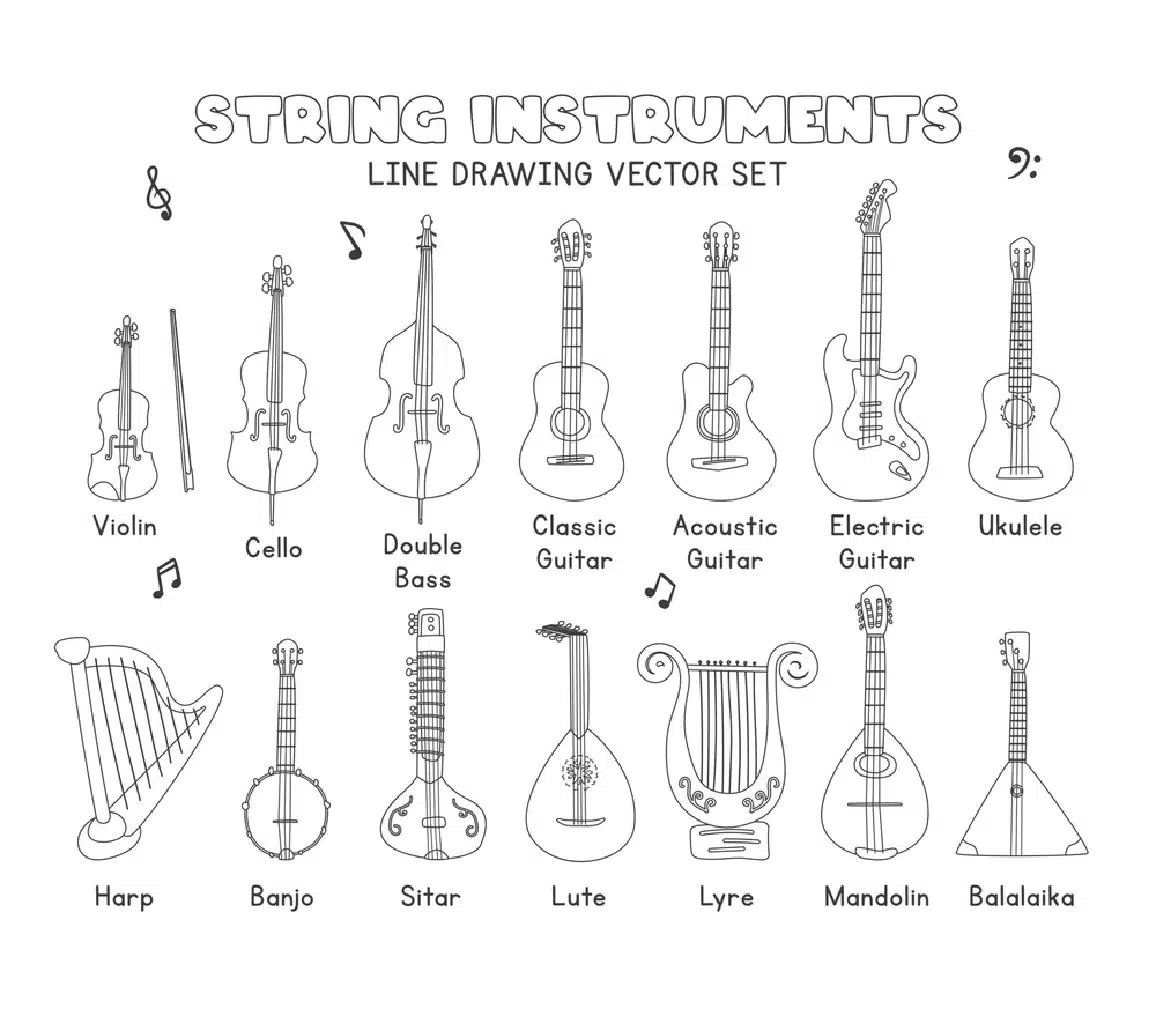
4. The Cultural Significance of String Instruments
String instruments hold deep cultural significance across the globe, symbolizing more than just music; they often embody traditions, spiritual beliefs, and community identity. From ancient times to the present day, these instruments have been central to cultural expression, storytelling, and social events, connecting people across generations and geographical boundaries.
In many cultures, string instruments serve as vehicles for storytelling. In West Africa, for instance, the kora, a 21-string harp-lute played by griots, or traditional storytellers, has been used for centuries to preserve history and communicate cultural values through music. Each kora player, often part of a long lineage, passes down songs that recount tribal histories, family lineages, and moral lessons.
Similarly, the sitar and veena in Indian classical music carry the weight of centuries of spiritual and cultural tradition. Played during religious ceremonies, these instruments aim to invoke divine energy, with their complex ragas (melodic frameworks) creating an immersive, contemplative atmosphere that complements the spiritual experience.
In Europe, string instruments became integral to royal courts and the social life of the aristocracy. The violin and lute, in particular, were favored by nobles during the Renaissance and Baroque periods. Playing and listening to these instruments was seen as a mark of refinement and sophistication. The violin later evolved to become a key instrument in folk traditions across European countries, such as Irish, Scottish, and Balkan music, each bringing its unique style and sound. In this way, the violin has bridged both high culture and folk traditions, creating a unifying musical identity across social classes.
In the Americas, the guitar holds a special place in cultural expression, particularly in genres like flamenco, mariachi, blues, and folk. Flamenco guitar in Spain, for example, is not just an instrument but an expression of passion and resilience, deeply tied to the cultural history of the Romani people in Andalusia.
In North America, the guitar became an essential voice in blues and folk music, symbolizing both the hardships and hopes of working-class communities. Its accessibility and adaptability have made it a universal instrument, resonating with musicians and listeners across a wide range of cultural contexts.
In Japan, the shamisen, a three-stringed instrument, plays a vital role in traditional music and theater. It is often performed in kabuki theater and is used to accompany folk songs, adding a unique tonal quality that evokes Japan’s natural landscapes and cultural heritage. This instrument, much like others in Asian countries, represents a link between modern society and ancient customs, preserving cultural narratives while adapting to contemporary styles.
The cultural significance of string instruments extends beyond their sounds—they often represent symbols of identity, pride, and resilience. Through these instruments, communities maintain a living connection to their heritage, adapting and transforming their music to reflect contemporary life while honoring their past.
Whether played in a grand concert hall or a quiet village gathering, string instruments continue to carry cultural weight, reflecting the values, history, and spirit of the communities that cherish them.
5. The Role of String Instruments in Various Musical Genres
String instruments play a foundational role across diverse musical genres, lending their unique sounds and expressive versatility to a wide range of musical styles. Each genre utilizes string instruments in its own way, adapting their tones and techniques to reflect distinctive cultural values, moods, and rhythms. From classical music to jazz, rock, folk, and world music, string instruments are essential in shaping the character and depth of many musical traditions.
Classical Music
In Western classical music, string instruments form the heart of orchestras and chamber ensembles, with violins, violas, cellos, and double basses often leading the melody and harmony. These instruments provide both melodic and harmonic foundations, creating rich layers that add emotional depth and resonance.
The violin, often called the “queen of instruments” in the classical world, frequently takes the lead role in solo performances and orchestras alike, while the cello and double bass add a powerful, grounding bassline. String quartets—comprising two violins, a viola, and a cello—are among the most revered configurations in classical music, showcasing the intricate interplay between these instruments.
Folk and Traditional Music
String instruments are equally essential in folk and traditional music around the world, where they often reflect regional identities and histories. The guitar is a cornerstone of American folk, country, and bluegrass, its warm, rhythmic strumming providing the foundation for storytelling and vocal harmonies. In Irish and Scottish folk music, the fiddle (a term often used interchangeably with the violin in these contexts) plays lively jigs and reels, conveying the vibrant spirit of these cultures.
Meanwhile, in Spanish flamenco, the guitar takes on a leading role, its intricate fingerpicking and percussive rhythms embodying the passionate energy and emotional intensity of the genre. Across Asia, string instruments like the Chinese erhu and the Indian sitar are deeply connected to the traditional music of their respective cultures, each contributing a distinct tonal quality that defines the sound of regional folk music.
Jazz and Blues
String instruments bring distinctive color to jazz and blues, genres known for their improvisational spirit and emotional expression. In jazz, the double bass serves as the rhythmic backbone, anchoring the music while allowing musicians to explore melodic and harmonic improvisation.
Guitarists in jazz, such as Wes Montgomery and Django Reinhardt, brought complex finger techniques and improvisation to the forefront, using the guitar to craft intricate solos and unique harmonies. The guitar is equally vital in blues, where its soulful, bending notes and slide techniques are used to express themes of struggle and resilience. Blues guitarists like B.B. King and Muddy Waters developed iconic styles that continue to influence musicians across genres.
Rock and Pop
String instruments, especially the electric guitar, revolutionized rock music, becoming symbols of rebellion, creativity, and cultural shifts. From the raw, distorted power chords of rock and punk to the melodic solos of classic rock and the rhythmic strumming of pop, the guitar has defined the sound and style of countless rock and pop artists. Bass guitar also plays a crucial role in these genres, providing rhythm and depth that drive the music’s energy. Legends like Jimi Hendrix, Eric Clapton, and Led Zeppelin popularized the electric guitar’s expressive potential, shaping the iconic soundscapes of rock music.
World Music
String instruments are essential to world music, representing the diverse traditions and voices of global cultures. African music features instruments like the kora, a West African harp-lute, and the ngoni, a stringed instrument integral to Malian music, adding rhythmic and melodic complexity to traditional songs. In India, the sitar and sarod are fundamental to classical music, embodying centuries of musical tradition through their intricate melodies and unique timbres. In Latin America, the charango and cuatro add a bright, lively sound to Andean and Caribbean music, while the oud is central to Middle Eastern music, known for its rich, resonant tones.
In every genre, string instruments bring an array of textures, colors, and expressions that enhance the emotional and cultural impact of the music. Their versatility allows them to transcend genres, adapting to each musical tradition’s unique needs and embodying the spirit and character of each style.
Whether through the soaring melodies of classical violin, the rhythmic strums of folk guitar, or the passionate riffs of rock, string instruments remain integral to the global language of music.
7. Innovations in String Instruments
The evolution of string instruments is a testament to human creativity and ingenuity, with innovations continually reshaping how these instruments are designed, played, and experienced. Throughout history, advancements in technology and materials have led to significant changes in string instruments, enhancing their capabilities, expanding their range, and making them more accessible to musicians of all levels.
One of the most notable innovations in string instruments is the development of synthetic strings. Traditional gut strings, made from the intestines of sheep or other animals, have long been favored for their warm tone and responsiveness. However, they are sensitive to humidity and temperature changes, making tuning and maintenance challenging. The advent of synthetic strings, made from materials like nylon and composite materials, has provided musicians with greater stability and durability. These modern strings maintain consistent tension and pitch, regardless of environmental conditions, allowing for greater reliability in performance.
Another significant innovation is the electric string instrument. The electric guitar, introduced in the 1930s, revolutionized music by allowing guitarists to amplify their sound and experiment with various effects. This led to the birth of rock and roll and the development of numerous genres that relied heavily on electric string instruments. Today, electric violins, cellos, and basses are also becoming popular, offering musicians new ways to blend traditional string techniques with modern soundscapes. These instruments can be plugged into amplifiers and effects pedals, allowing for a broader sonic palette and the ability to create unique tones that were previously unattainable.
Additionally, advancements in manufacturing techniques have led to improved craftsmanship and design in acoustic string instruments. Computer-aided design (CAD) technology enables luthiers to create precise measurements and intricate designs, enhancing the overall quality and playability of instruments. This technological integration has resulted in lighter, more resonant instruments that provide musicians with increased comfort and improved sound projection.
Moreover, the incorporation of alternative materials has been a game-changer in the design of string instruments. For example, carbon fiber is increasingly used for bows and instrument bodies, offering durability and resistance to environmental changes. This material is not only lightweight but also provides a unique sound quality that appeals to many musicians. Innovations in the use of wood, such as laminated wood or the combination of different types of wood, allow for greater variation in tone and enhanced resonance.
Finally, the rise of digital technology has transformed how musicians interact with string instruments. With the introduction of MIDI (Musical Instrument Digital Interface) technology, players can now connect their instruments to computers and software, enabling them to compose, record, and produce music in innovative ways. Digital applications also allow for practice and learning through interactive platforms, making it easier for aspiring musicians to develop their skills.
In summary, innovations in string instruments reflect a dynamic interplay between tradition and modernity. From synthetic strings to electric instruments and advances in materials and technology, these developments continue to expand the possibilities for musicians and enhance their creative expression. As string instruments evolve, they remain integral to the rich tapestry of musical culture, adapting to contemporary needs while preserving their historical significance.
8. Learning and Playing String Instruments
Learning to play string instruments is a fulfilling and enriching experience that offers numerous cognitive, emotional, and social benefits. Whether it’s the violin, cello, guitar, or any other stringed instrument, the journey of mastering these instruments can be both challenging and rewarding. Understanding the fundamentals of learning string instruments can help aspiring musicians navigate their path more effectively.
 Starting with the Basics
Starting with the Basics
For beginners, selecting the right instrument is crucial. Each string instrument has its unique characteristics and demands, so it’s important to choose one that resonates with the learner’s interests and goals. For instance, the guitar is often favored for its versatility across genres and its approachable learning curve. In contrast, the violin, while more challenging at first, offers a wealth of repertoire and a strong presence in classical and folk music.
Once the instrument is chosen, beginners typically start with basic techniques such as holding the instrument properly, understanding finger placement, and producing sound. This foundational stage is critical, as proper technique can prevent bad habits that may be difficult to unlearn later. For example, in violin playing, learning the correct bow hold and posture is essential to achieving a beautiful sound and avoiding strain.
Finding the Right Instruction
Learning string instruments can be facilitated through various methods, including formal lessons, online tutorials, or self-study. Many beginners find it beneficial to take lessons from a qualified teacher who can provide personalized guidance, immediate feedback, and structured learning paths. This one-on-one instruction can help students progress more quickly and develop a deeper understanding of music theory and technique.
With the rise of digital technology, online resources have also become increasingly popular. Platforms offering video tutorials, interactive courses, and apps provide learners with the flexibility to study at their own pace. This accessibility opens the door for many who may not have local access to music teachers or classes. Online communities and forums can also provide support and encouragement, allowing learners to connect with others who share their passion.
Practice and Progress
Consistent practice is vital for developing proficiency on any string instrument. Beginners are often encouraged to establish a regular practice routine that focuses on specific skills, such as scales, exercises, and pieces. This structured approach not only enhances muscle memory and technical ability but also builds confidence and a sense of accomplishment as students see their progress over time.
Incorporating a variety of practice techniques can also enhance learning. For instance, slow practice allows learners to focus on accuracy and technique, while playing along with recordings can help develop timing and rhythm. Additionally, setting achievable goals, whether learning a new piece or mastering a particular technique, can motivate learners and provide a sense of direction.
Joining a Community
As students gain confidence and skill, joining a community of musicians can further enrich their experience. Playing with others, whether in a formal orchestra, a casual ensemble, or even with friends, fosters collaboration and creativity. Group playing encourages listening skills and helps students learn to blend their sound with others, an essential aspect of making music.
Participating in performances, whether informal recitals or public concerts, can also be a pivotal experience. Performing in front of an audience helps students confront their fears, build confidence, and experience the joy of sharing music with others.
The Joy of Lifelong Learning
Ultimately, learning and playing string instruments can be a lifelong journey. Many musicians find that as they continue to develop their skills, they uncover new genres, techniques, and styles that excite them. String instruments are versatile, allowing players to explore classical, jazz, folk, rock, and beyond, creating endless opportunities for creativity and expression.
9. The Therapeutic Effects of String Instruments
String instruments possess profound therapeutic effects, offering both emotional and physical benefits. Playing or listening to string instruments can reduce stress and anxiety, promote relaxation, and enhance overall well-being. The soothing sounds of instruments like the violin or cello can evoke deep emotional responses, facilitating self-expression and healing.
Music therapy often incorporates string instruments to aid in rehabilitation, helping individuals improve motor skills and cognitive function. Moreover, the act of playing encourages mindfulness and focus, allowing individuals to escape daily pressures and immerse themselves in creativity. Thus, string instruments serve not only as tools for artistic expression but also as vital instruments for emotional healing.

